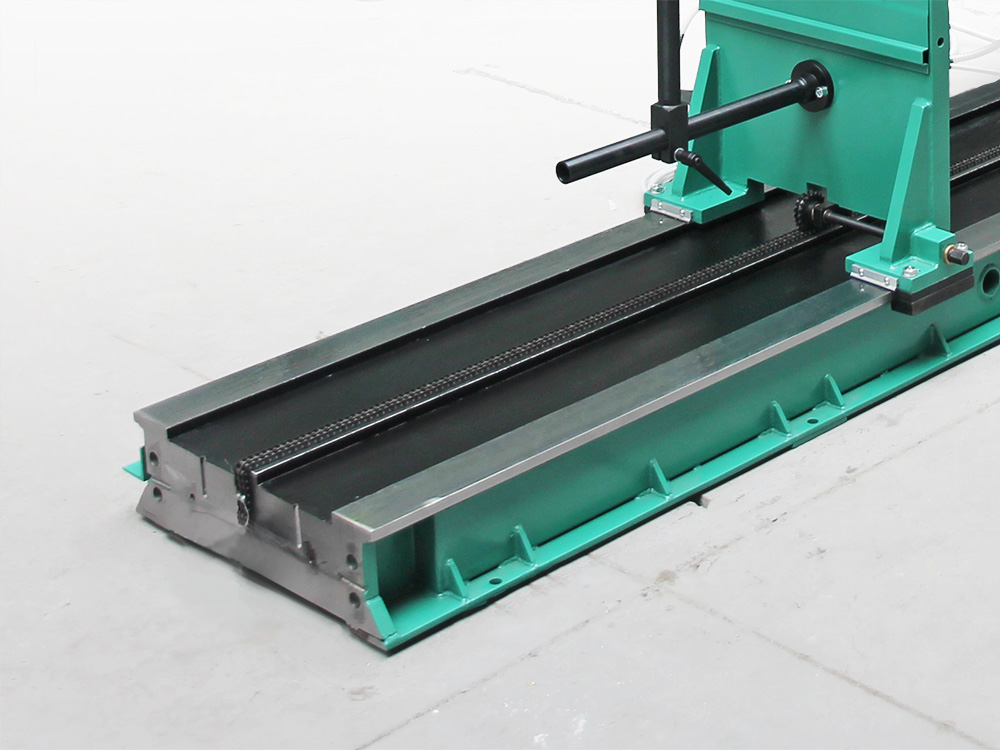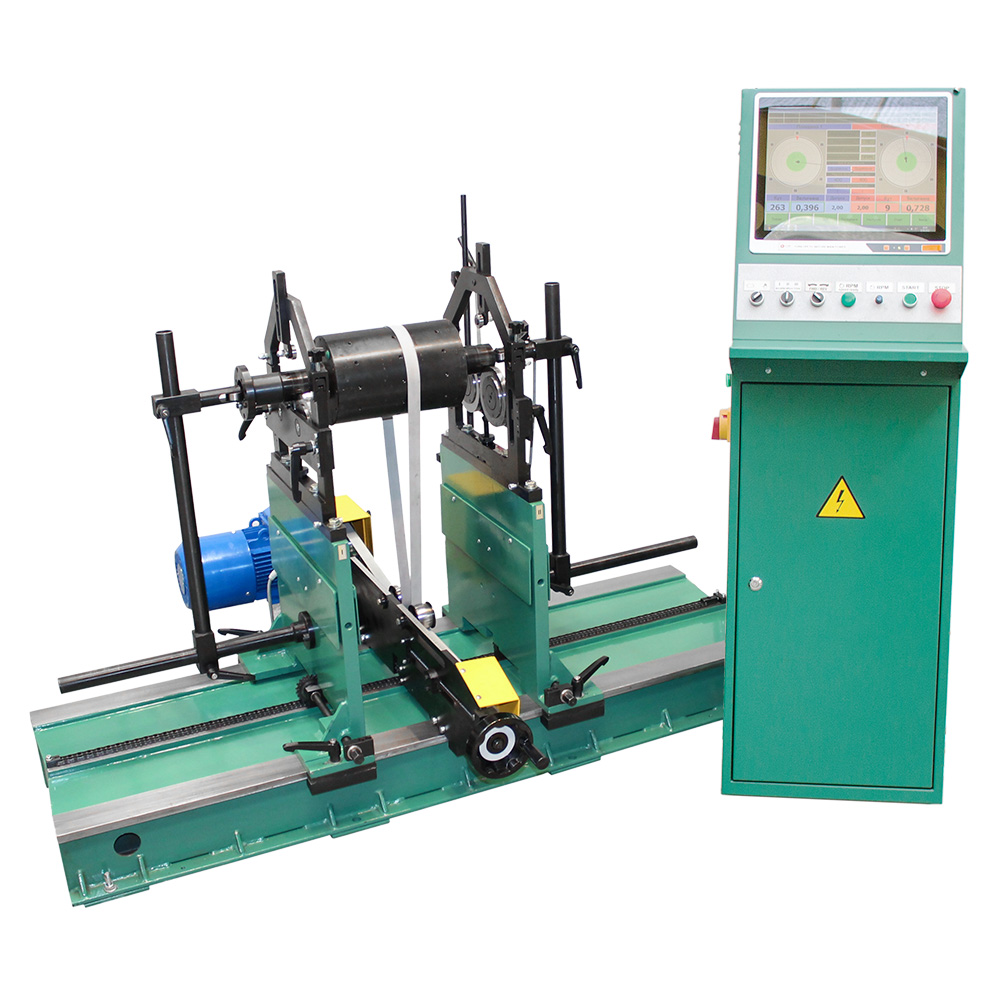9D715
Hard-bearing balancing machine for medium-weight rotors up to 100 kg
Maximal weight, kg
Maximal diameter, mm
Mid-range industrial balancing – production & maintenance
The 9D715 is a pre-resonant type machine which has been designed to solve a wide range of problems. The machine has become very popular in many repair shops and services, as well as in production facilities in various industries, as it has the ability to balance parts weighing from 1 to 100 kg. Such a range of load capacity and well thought-out design of all components of the machine made it one of the most versatile machines of this type.
The equipment allows balancing parts of any configuration, thanks to the patented design “MODULAR DESIGN”, which allows changing the characteristics of the machine by replacing modules or accessories, thus the machine can be used for balancing inter-support rotors, parts in their own bearings and using mandrels to balance single plane rotors of the “disk” type, even if they do not have their own journals for installation. In addition, the design of the protective bracket with radial stops allows safe handling of cantilevered parts, eliminating the possibility of their tipping over during balancing.
The standard design of the machine contains a monolithic bed, two supports of pre-resonance type that are made of a single piece of sheet metal, as well as “belt drive” having a patented unique design “LONG STROKE” that allows you to work with a large range of products that differ significantly in size using only two types of drive belts instead of 20. Safety of work with “belt drive” is provided by axial stops that limit axial displacement of the part during balancing and adjustment. “Axial” and “radial” stops are also made by patented technology “MOVING ROLLER” that allows to exclude the occurrence of measurement errors associated with the contact of the stops with the workpiece.
The control of the frequency-controlled electric drive as well as the unbalance measurement process and the various machine systems is realized by means of a control panel, which is part of the control cabinet containing modern electrical components ensuring the reliability of the machine systems.
- High accuracy 0,4 gmm/kg = 0,4 μm.
- Real-time balancing process.
- Short unbalance measurement time.
- Maximum machine sensitivity with operator-controlled setup and calibration.
- Large diameter spherical rollers.
- Measures large initial unbalances without damaging the machine.
- Belt drive design for rotating any rotor with two belts.
- Balances rotors with small distances between bearing journals.
- Smooth speed control and acceleration through a frequency inverter drive.
- Options: axial drive, drilling module, extended machine base.
High Precision Balancing
- High-precision vibration sensor – Sensor configuration optimized for lightweight rotor detection with micro-vibration sensitivity and external disturbance filtering. The mounting design provides maximum sensitivity throughout the operational envelope for precise unbalance measurement.
- Precision roller assembly with advanced bearings – Rollers manufactured using patented “exact barrel”® grinding technology with high-precision bearing integration for superior rotational accuracy. The specialized bearing configuration optimizes performance for lighter rotor applications.
- Monolithic support and base construction – Integrated rigid framework minimizes oscillation system elements to eliminate vibration losses during measurement. This structural design ensures consistent accuracy across the 1-100kg rotor weight capacity.
Mechanical Structure Design
- Hard-bearing design – Low natural resonance frequency of support structure enables balancing at reduced operational speeds for improved safety. This characteristic reduces power requirements while maintaining measurement accuracy for lighter rotor applications.
- Large initial unbalance handling capability – Structural design accommodates rotors with significant initial unbalances without machine damage or measurement degradation. The robust construction enables on-machine correction operations for enhanced productivity.
- Narrow roller block design with large-radius rollers – Compact support geometry with oversized roller radius optimizes crankshaft and automotive component balancing applications. The narrow profile maximizes workspace accessibility while maintaining structural rigidity for accurate measurements.
- Adjustable roller block height mechanism – Variable height system accommodates rotor bearing journals from 20-140mm diameter with precise centering capability. The adjustment range enables setup flexibility for diverse rotor geometries including small precision components.
- Wide roller design for minimal journal accommodation – Extended roller width supports rotors with extremely short bearing journal lengths down to specification minimums. This design feature enables balancing of compact assemblies and specialized components with challenging geometry constraints.
- “MICRO-TUNING”® axial alignment technology – Specialized compensation system eliminates measurement errors from axial misalignment during rotation cycles. This technology maintains accuracy regardless of minor rotor positioning variations during setup and operation.
- Multiple adjustment unit integration – Comprehensive adjustment capability enables rapid changeover between diverse rotor types including drums, gearboxes, and turbine components. The multi-unit design minimizes setup time while maintaining consistent measurement standards.
Drive System Configuration
- Compact frequency-controlled asynchronous drive – 2.2kW electric motor with power reserve optimizes acceleration and deceleration cycles for light to medium rotors. Frequency inverter provides smooth speed control across 300-1500 rpm range with infinitely variable adjustment capability.
- “LONG STROKE”® belt drive system – Two-belt configuration accommodates rotors up to 1350mm between bearing centers with consistent torque delivery. The extended stroke capability handles diverse rotor lengths while maintaining precise rotational control.
The PAK-1 unbalance measuring unit represents the latest generation of measuring complexes for dynamic balancing, combining high precision, stability, and ease of use. It’s designed to tackle a wide range of rotor balancing tasks, from simple to the most complex, requiring precise measurements.
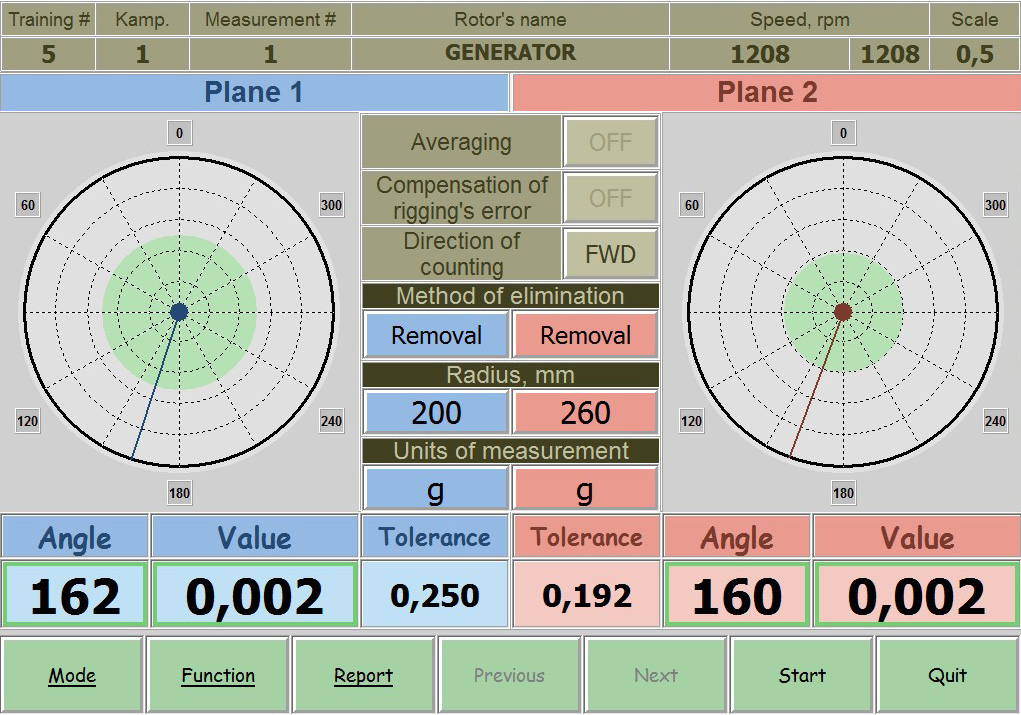
Based on an industrial fanless computer with a touchscreen and a multi-channel measuring unit, the system ensures reliability and a long service life, even under intensive use. The PAK-1 utilizes a universal measuring path and modern component base, allowing for equally high accuracy when working with all types of rotors.
Its intuitive interface, self-calibration capability, and automation of key operations make the complex a convenient tool for both experienced specialists and beginners.
Features of the PAK-1 System:
- High-precision dynamic balancing for rotors of any configuration.
- Industrial fanless PC with touchscreen and multi-channel measuring unit.
- Setup using trial runs with calibration weights on production rotors.
- Self-calibration by the operator, eliminating annual service adjustment costs.
- Calculation of permissible unbalance values, even without technical documentation.
- Determination of control weight mass to simplify setup for a specific rotor.
- Real-time display of unbalance magnitude and angular position, including “highlighting” of the correction zone.
- Automatic measurement start upon reaching a set speed and automatic stop after cycle completion.
- Display of unbalance magnitude in grams, gmm, gcm, gmm/kg.
- Vector and exponential averaging for working with moving elements and in noisy conditions.
- Additional functions that significantly simplify the balancing process and expand the technological capabilities of the balancing machine.
- Generation and printing of balancing reports directly from the system.
- USB ports and Ethernet interfaces for connecting a printer, data storage, and integration into a local network.
|
Parameter |
Value |
|---|---|
|
Balancing rotors weight range, kg |
1 – 100 |
|
Maximum rotor diameter (over the bed), mm |
1100 |
|
Distance between rotor bearing journal centers, mm, min/max |
150 -1350 |
|
Rotor bearin journals diameter, mm |
20 – 140 |
|
Machine type |
Hard-bearing |
|
Support type |
Rollers |
|
Minimal achievable residual specific unbalance, gmm/kg |
0.4 |
|
Rotor rotation speed range, rpm |
300 – 1500 |
|
Drive type |
Belt |
|
Electric motor power, kW |
2.2 |
|
Power supply parameters |
400V ± 10%, 3 Ph, 50Hz ± 1 |
|
Balancing system |
PAK-1 |
|
Overall machine dimensions (length x width x height), mm |
2100 x 1100 x 1500 |
|
Machine weight, kg |
450 |
- The operation manual on the machine with acceptance tests reports and the basic electric circuit – 1 pc.
- The operation manual on balancing system – 1 pc.
- Drive belt – 2 pc.
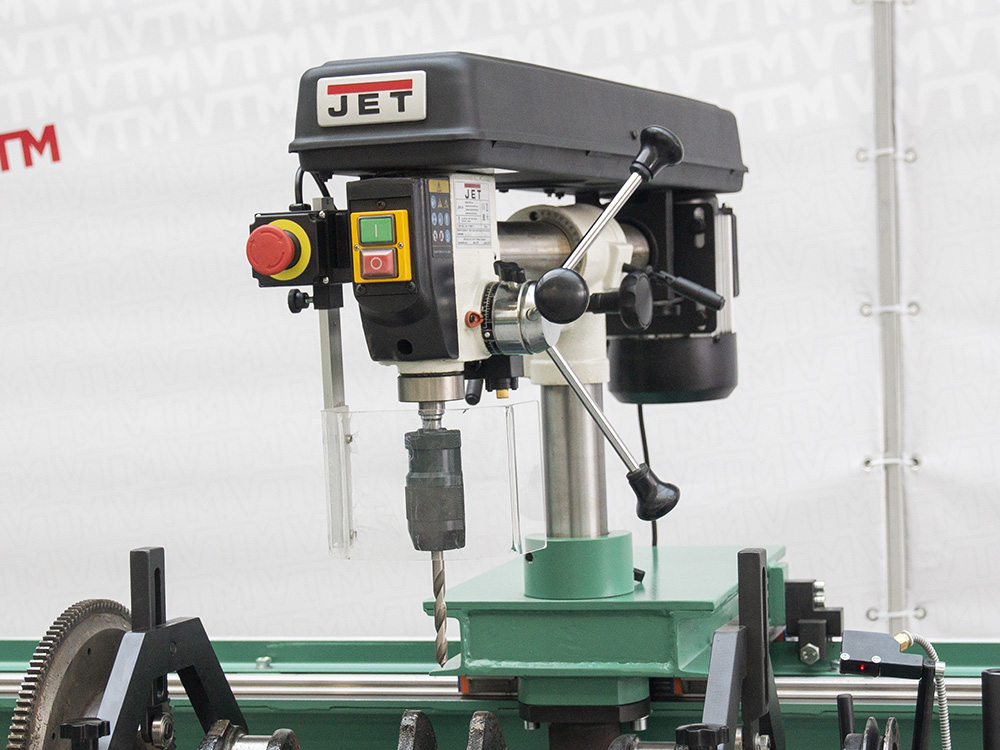
Drilling module
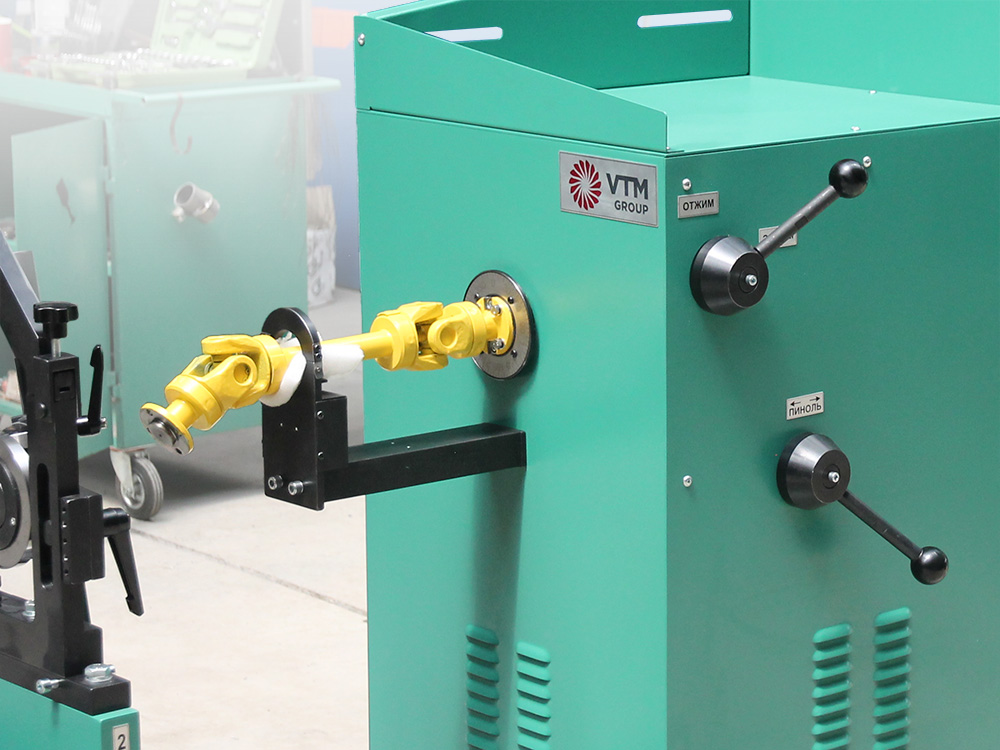
Axial drive
